Yunshen releases industry application flagship robot dog Jueying X30
On October 9, Yunshen Technology released the "Jueying X30" four-legged robot. As a new generation of industry-level products for industry applications, it is targeted at power stations, factories, pipe gallery inspections, as well as emergency rescue, fire investigation, The core demands of future scientific research and other fields bring the world's leading industry capabilities: original integrated sensing capabilities, the first in Asia to achieve rapid and stable obstacle crossing in changing environments, hollow industrial stairs up and down, autonomous inspections day and night, all-weather, breaking more Scenario restrictions and the ability to respond quickly to unexpected tasks; for the first time in Asia, the operating temperature range of a quadruped robot has been extended to -20°C to 55°C, significantly broadening the application areas and seasons; it has its own real-time monitoring system and emergency response system to ensure Smart operations are safer and more efficient.
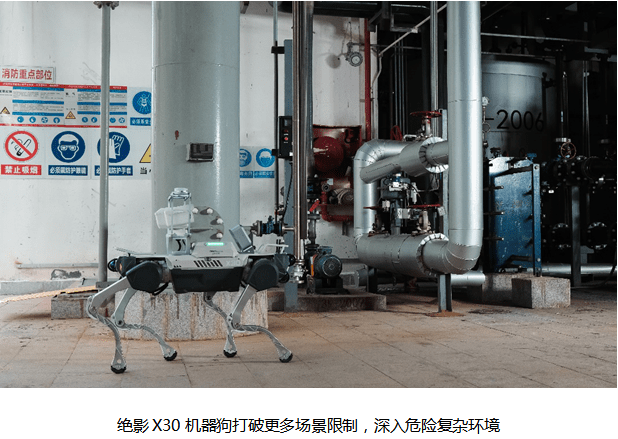
Seventeen departments including the Ministry of Industry and Information Technology issued the "Implementation Plan for "Robot" Application Actions", proposing to focus on product innovation and scene promotion, and implement classified policies to expand the depth and breadth of robot applications. Robot applications in various places are ushering in a window period for upgrading and leapfrog development. Enriching scenarios and increasing usage density have become the focus of development in the robotics industry.
As a cutting-edge technology field that the world is competing to develop, bionic foot robots have excellent performance in flexibility and agility. They have excellent obstacle surmounting capabilities and can enter complex environments to perform repetitive and high-risk operations, thus greatly expanding the operating boundaries of robots. As a pioneer in the application of bionic robots, Yunshen Technology has achieved remarkable results in many fields such as power inspection, firefighting and emergency reconnaissance, education and scientific research, metal smelting and surveying and mapping
After long-term cooperation with Yunshen Technology and global industry giants in real scenarios, the new generation of intelligent quadruped platform Jueying X30 has entered the industry with its excellent performance and strength
The severe cold winter and the scorching summer are unstoppable no matter how wind or rain comes
During outdoor inspections and rescue investigations, there are huge temperature differences in different seasons and regions. As an industry-level flagship model, the operating temperature range of the X30 has been greatly increased. It has been tested in actual combat environments from -20°C to 55°C, and It has a strictly tested IP67 protection level.
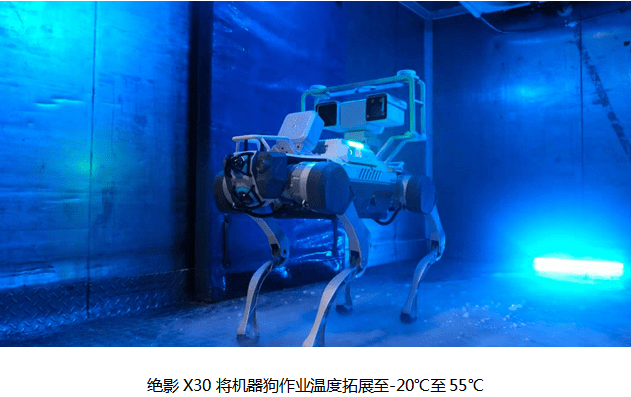
Overcome obstacles quickly and respond quickly
In inspection, security, rescue and reconnaissance scenarios, various stairs are obstacles that restrict traditional robots, and are also the key to testing the adaptability of quadruped robots to complex terrain. The X30 combines powerful movement capabilities with fusion perception capabilities. It can go up and down stairs up to 45° with unprecedented speed and flexibility. It can also climb hollow industrial stairs to achieve immediate response to unexpected task needs and quickly go deeper and deeper. Multiple complex scenes and work blind spots.
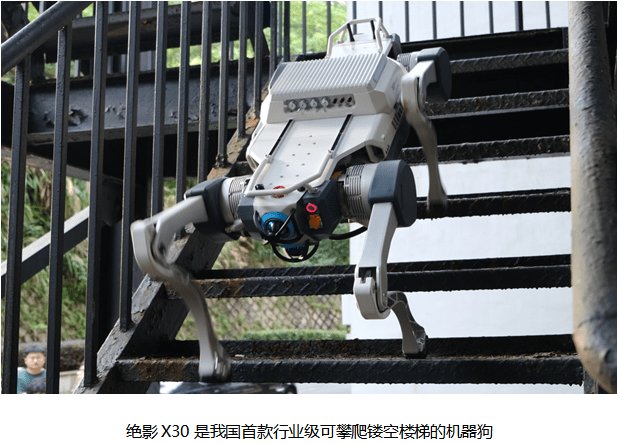
At night, become an expert in fused perception
Industrial applications The working hours cover day and night, and the on-site light conditions are changeable and uncontrollable. X30's unique fusion perception capabilities allow quadruped robots to navigate and operate autonomously in extreme environments such as dimness, strong light, flickering, or even no light source. . Re-expressed: X30’s unique fused perception capabilities enable quadruped robots to operate in various light conditions, including day and night. Whether it is in extreme environments such as dimness, strong light, flickering, or even no light source, it can navigate and perform tasks autonomously
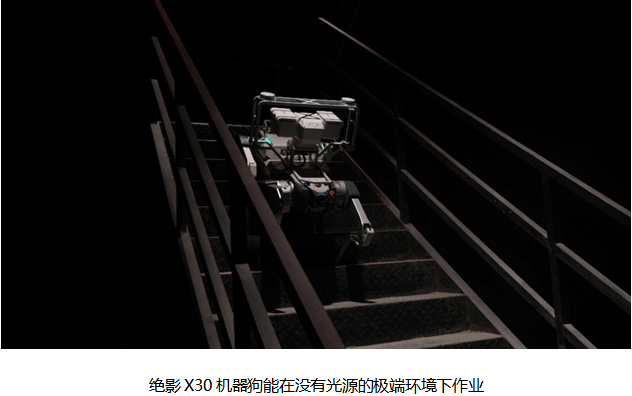
Worry-free collaboration, safe and efficient
In practical applications, workers need to quickly and intuitively understand the working status of the equipment. X30 adds light language interaction to the supporting professional controller, which can feed back the equipment operation status to the staff through light language. At the same time, the X30 implements safe stops for random dynamic objects, combined with one-click emergency stop, to better ensure the safety of collaborators and mobile platforms in industrial scenarios.
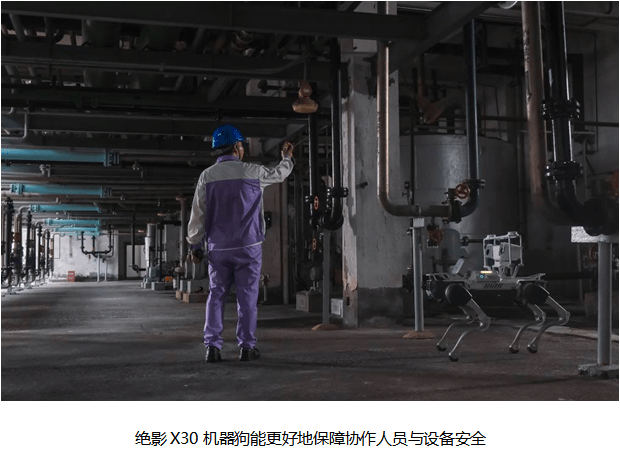
Super long battery life, quick battery replacement
Long-lasting battery life is a common expectation for industry-level quadruped robots in many application scenarios. X30 increases load endurance by 25%. At the same time, the battery supports rapid on-site replacement, providing protection for special tasks and industry application emergencies
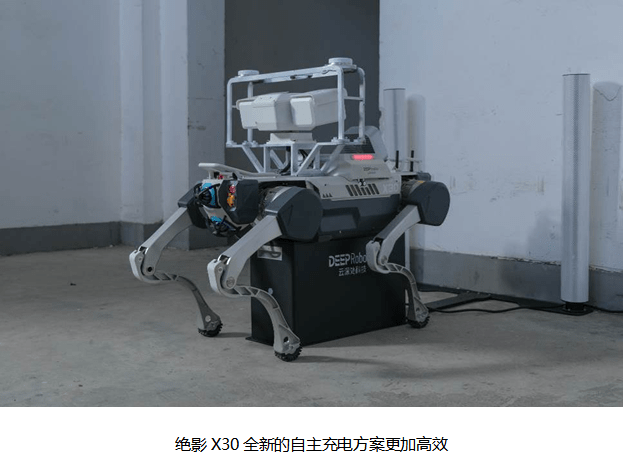
Autonomous charging, maintaining stability and reliability
Autonomous charging is a basic requirement for unmanned inspections and autonomous operations. However, problems such as light, stains, and dust in various industry scenarios will affect the efficiency of traditional charging solutions. After long-term practice, Yunshen Technology has independently developed The new generation of independent charging solutions based on integrated positioning ensures that the charging process is smoother and more efficient.
The above is the detailed content of Yunshen releases industry application flagship robot dog Jueying X30. For more information, please follow other related articles on the PHP Chinese website!

Hot AI Tools

Undresser.AI Undress
AI-powered app for creating realistic nude photos

AI Clothes Remover
Online AI tool for removing clothes from photos.

Undress AI Tool
Undress images for free

Clothoff.io
AI clothes remover

AI Hentai Generator
Generate AI Hentai for free.

Hot Article

Hot Tools

Notepad++7.3.1
Easy-to-use and free code editor

SublimeText3 Chinese version
Chinese version, very easy to use

Zend Studio 13.0.1
Powerful PHP integrated development environment

Dreamweaver CS6
Visual web development tools

SublimeText3 Mac version
God-level code editing software (SublimeText3)

Hot Topics
 1376
1376
 52
52
 Cloud computing giant launches legal battle: Amazon sues Nokia for patent infringement
Jul 31, 2024 pm 12:47 PM
Cloud computing giant launches legal battle: Amazon sues Nokia for patent infringement
Jul 31, 2024 pm 12:47 PM
According to news from this site on July 31, technology giant Amazon sued Finnish telecommunications company Nokia in the federal court of Delaware on Tuesday, accusing it of infringing on more than a dozen Amazon patents related to cloud computing technology. 1. Amazon stated in the lawsuit that Nokia abused Amazon Cloud Computing Service (AWS) related technologies, including cloud computing infrastructure, security and performance technologies, to enhance its own cloud service products. Amazon launched AWS in 2006 and its groundbreaking cloud computing technology had been developed since the early 2000s, the complaint said. "Amazon is a pioneer in cloud computing, and now Nokia is using Amazon's patented cloud computing innovations without permission," the complaint reads. Amazon asks court for injunction to block
 C++ Cloud Computing Best Practices: Deployment, Management, and Scalability Considerations
Jun 01, 2024 pm 05:51 PM
C++ Cloud Computing Best Practices: Deployment, Management, and Scalability Considerations
Jun 01, 2024 pm 05:51 PM
To achieve effective deployment of C++ cloud applications, best practices include: containerized deployment, using containers such as Docker. Use CI/CD to automate the release process. Use version control to manage code changes. Implement logging and monitoring to track application health. Use automatic scaling to optimize resource utilization. Manage application infrastructure with cloud management services. Use horizontal scaling and vertical scaling to adjust application capacity based on demand.
 As demand grows in the artificial intelligence era, AWS, Microsoft, and Google continue to invest in cloud computing
May 06, 2024 pm 04:22 PM
As demand grows in the artificial intelligence era, AWS, Microsoft, and Google continue to invest in cloud computing
May 06, 2024 pm 04:22 PM
The growth of the three cloud computing giants shows no sign of slowing down until 2024, with Amazon, Microsoft, and Google all generating more revenue in cloud computing than ever before. All three cloud vendors have recently reported earnings, continuing their multi-year strategy of consistent revenue growth. On April 25, both Google and Microsoft announced their results. In the first quarter of Alphabet’s fiscal year 2024, Google Cloud’s revenue was US$9.57 billion, a year-on-year increase of 28%. Microsoft's cloud revenue was $35.1 billion, a year-over-year increase of 23%. On April 30, Amazon Web Services (AWS) reported revenue of US$25 billion, a year-on-year increase of 17%, ranking among the three giants. Cloud computing providers have a lot to be happy about, with the growth rates of the three market leaders over the past
 Application alternatives of Golang technology in the field of cloud computing
May 09, 2024 pm 03:36 PM
Application alternatives of Golang technology in the field of cloud computing
May 09, 2024 pm 03:36 PM
Golang cloud computing alternatives include: Node.js (lightweight, event-driven), Python (ease of use, data science capabilities), Java (stable, high performance), and Rust (safety, concurrency). Choosing the most appropriate alternative depends on application requirements, ecosystem, team skills, and scalability.
 Java Cloud Computing: Cloud Migration Strategies and Steps
Jun 05, 2024 pm 03:54 PM
Java Cloud Computing: Cloud Migration Strategies and Steps
Jun 05, 2024 pm 03:54 PM
Java cloud migration involves migrating applications and data to cloud platforms to gain benefits such as scaling, elasticity, and cost optimization. Best practices include: Thoroughly assess migration eligibility and potential challenges. Migrate in stages to reduce risk. Adopt cloud-first principles and build cloud-native applications wherever possible. Use containerization to simplify migration and improve portability. Simplify the migration process with automation. Cloud migration steps cover planning and assessment, preparing the target environment, migrating applications, migrating data, testing and validation, and optimization and monitoring. By following these practices, Java developers can successfully migrate to the cloud and reap the benefits of cloud computing, mitigating risks and ensuring successful migrations through automated and staged migrations.
 Integration of PHP REST API and cloud computing platform
Jun 04, 2024 pm 03:52 PM
Integration of PHP REST API and cloud computing platform
Jun 04, 2024 pm 03:52 PM
The advantages of integrating PHPRESTAPI with the cloud computing platform: scalability, reliability, and elasticity. Steps: 1. Create a GCP project and service account. 2. Install the GoogleAPIPHP library. 3. Initialize the GCP client library. 4. Develop REST API endpoints. Best practices: use caching, handle errors, limit request rates, use HTTPS. Practical case: Upload files to Google Cloud Storage using Cloud Storage client library.
 Does the application of Golang technology in the field of cloud computing require high costs?
May 09, 2024 pm 02:00 PM
Does the application of Golang technology in the field of cloud computing require high costs?
May 09, 2024 pm 02:00 PM
Golang is economically viable in cloud computing because it compiles directly to native code, is lightweight at runtime, and has excellent concurrency. These factors can lower costs by reducing cloud computing resource requirements, improving performance, and simplifying management.
 Java Cloud Computing: A Guide to High Availability and Fault Tolerance Strategies
Jun 01, 2024 pm 01:00 PM
Java Cloud Computing: A Guide to High Availability and Fault Tolerance Strategies
Jun 01, 2024 pm 01:00 PM
This article provides guidance on high availability and fault tolerance strategies for Java cloud computing applications, including the following strategies: High availability strategy: Load balancing Auto-scaling Redundant deployment Multi-region persistence Failover Fault tolerance strategy: Retry mechanism Circuit interruption Idempotent operation timeout and callback Bounce error handling practical cases demonstrate the application of these strategies in different scenarios, such as load balancing and auto-scaling to cope with peak traffic, redundant deployment and failover to improve reliability, and retry mechanisms and idempotent operations to prevent data loss. .




